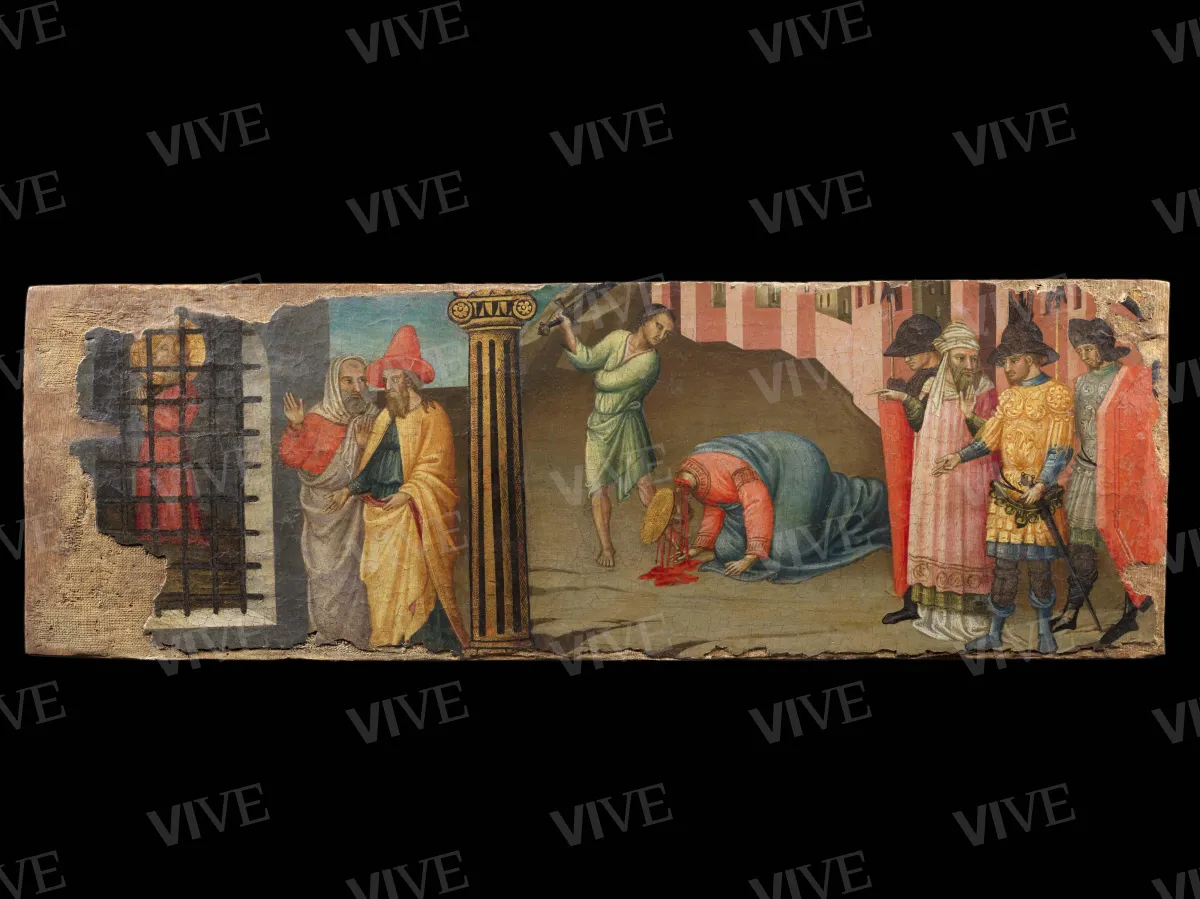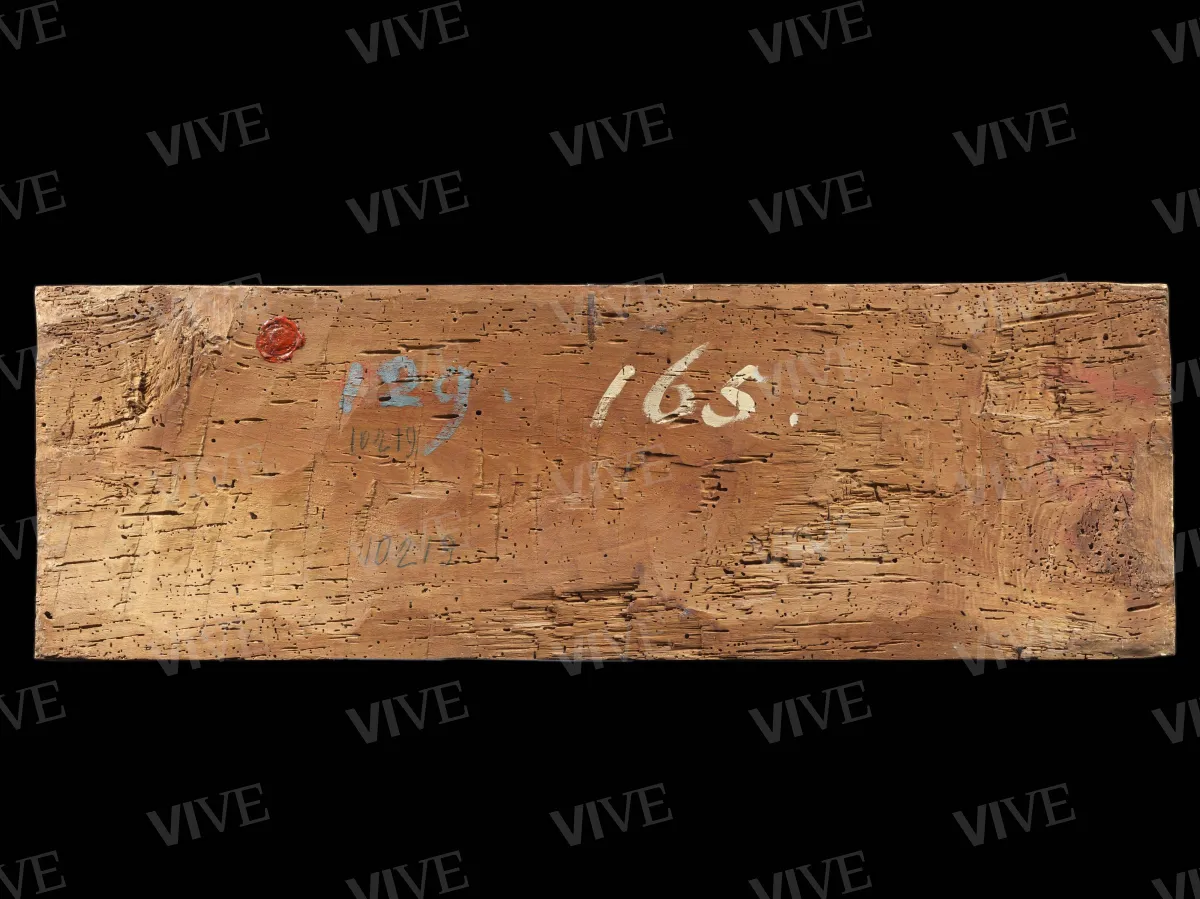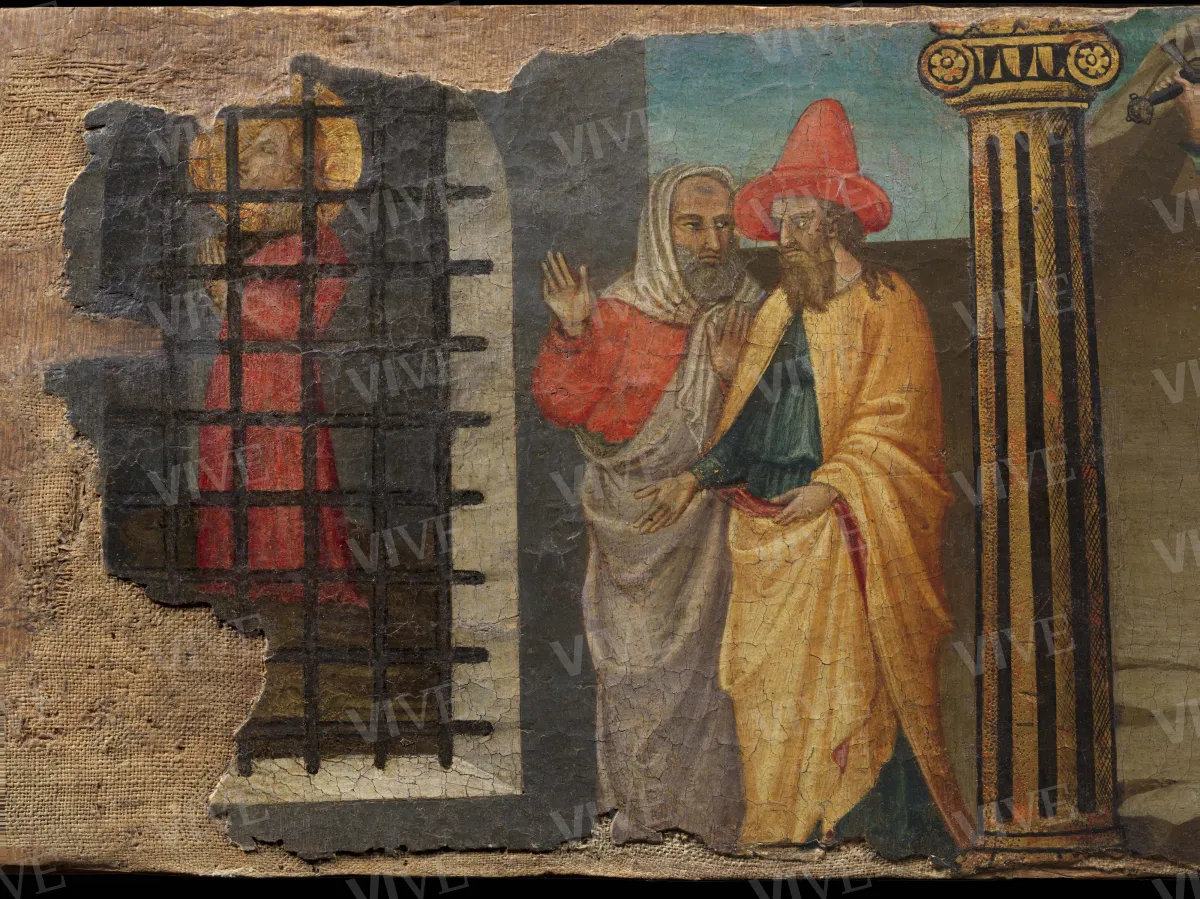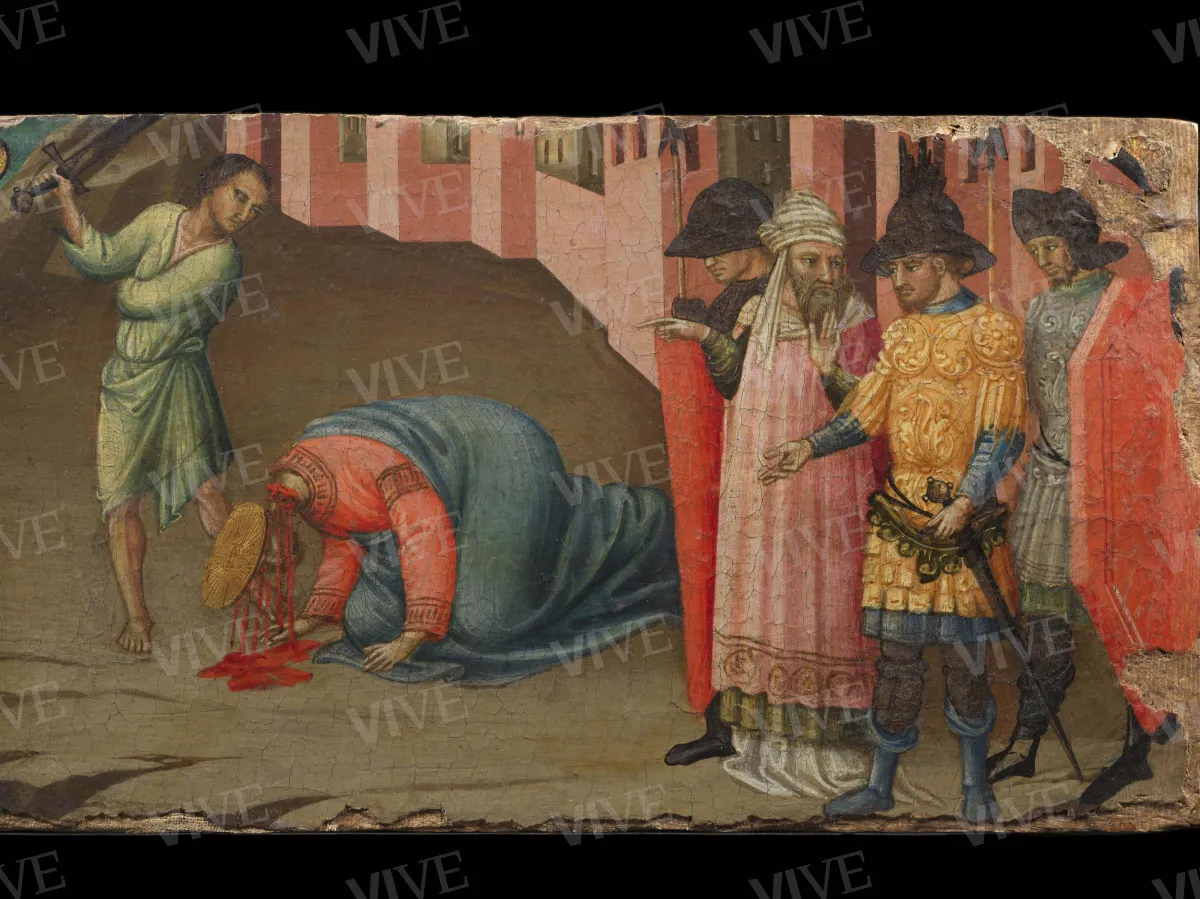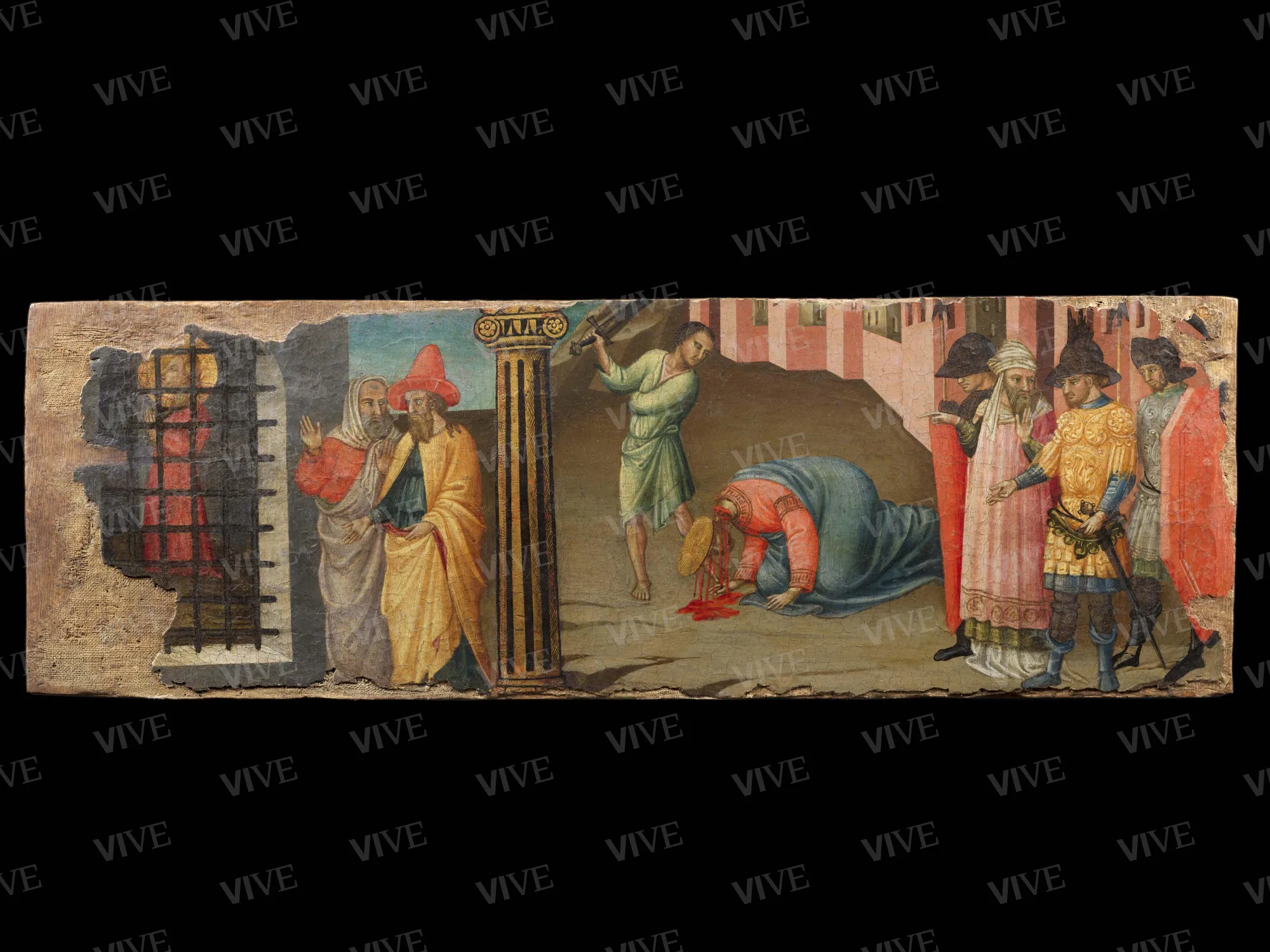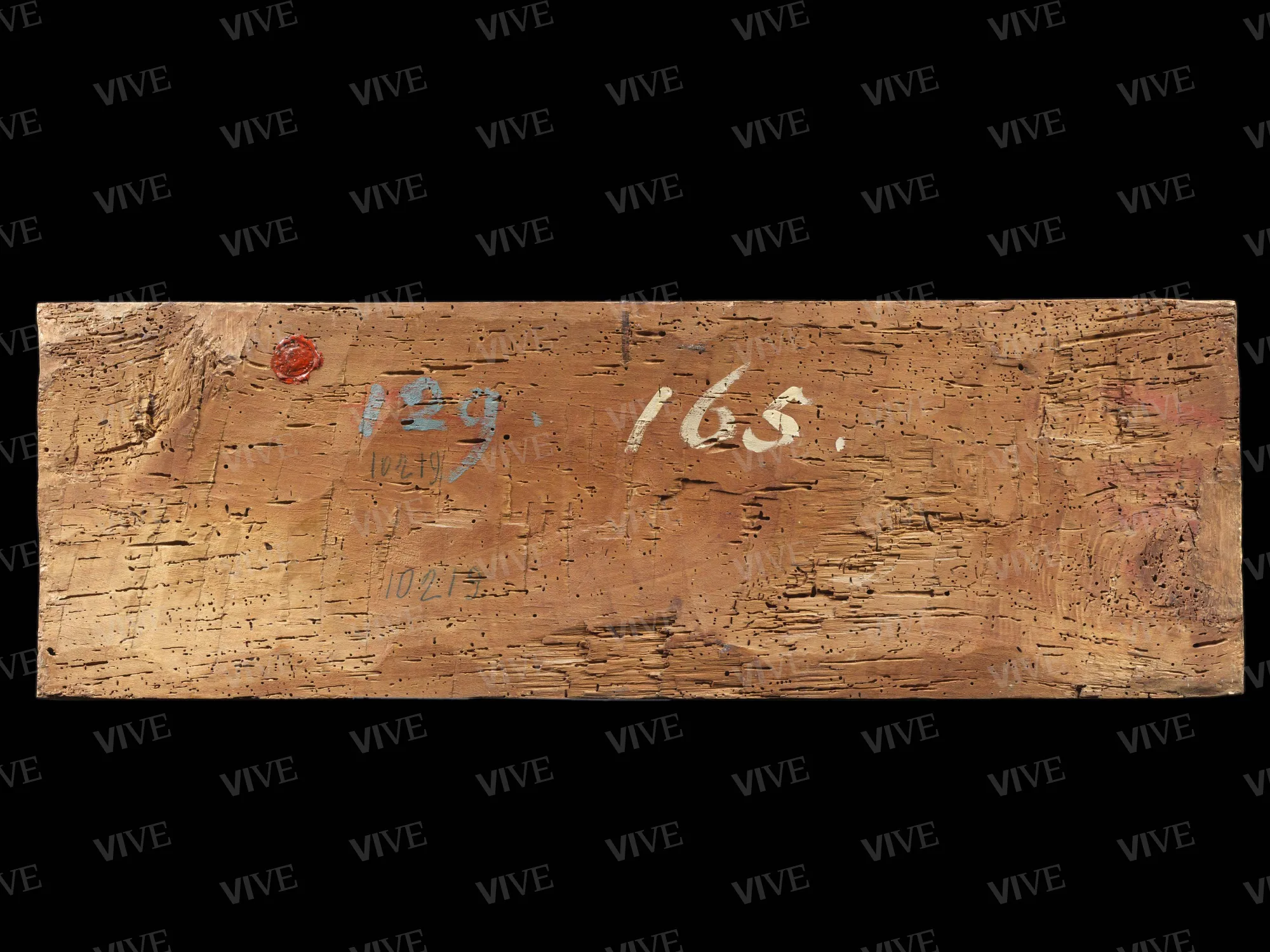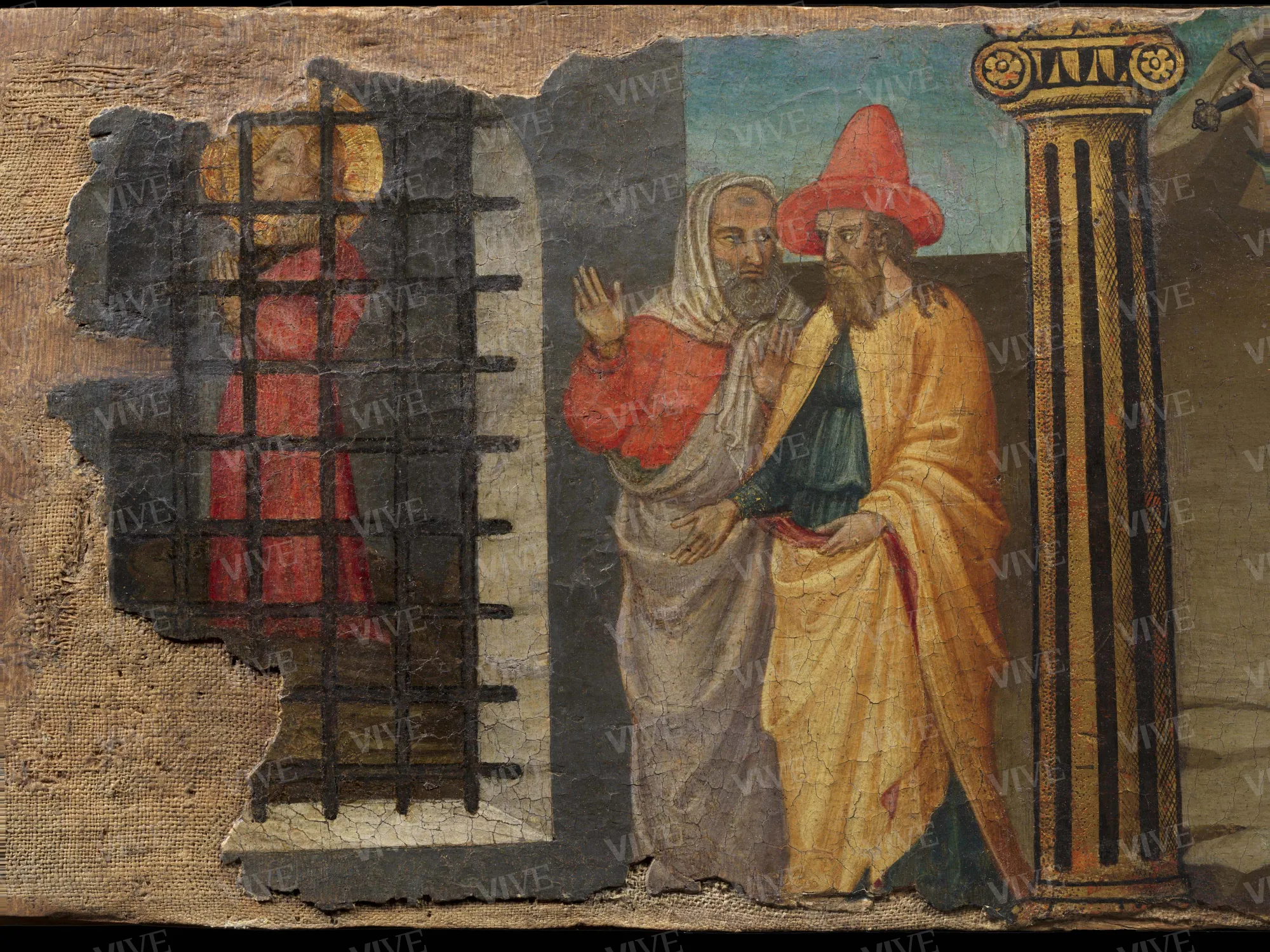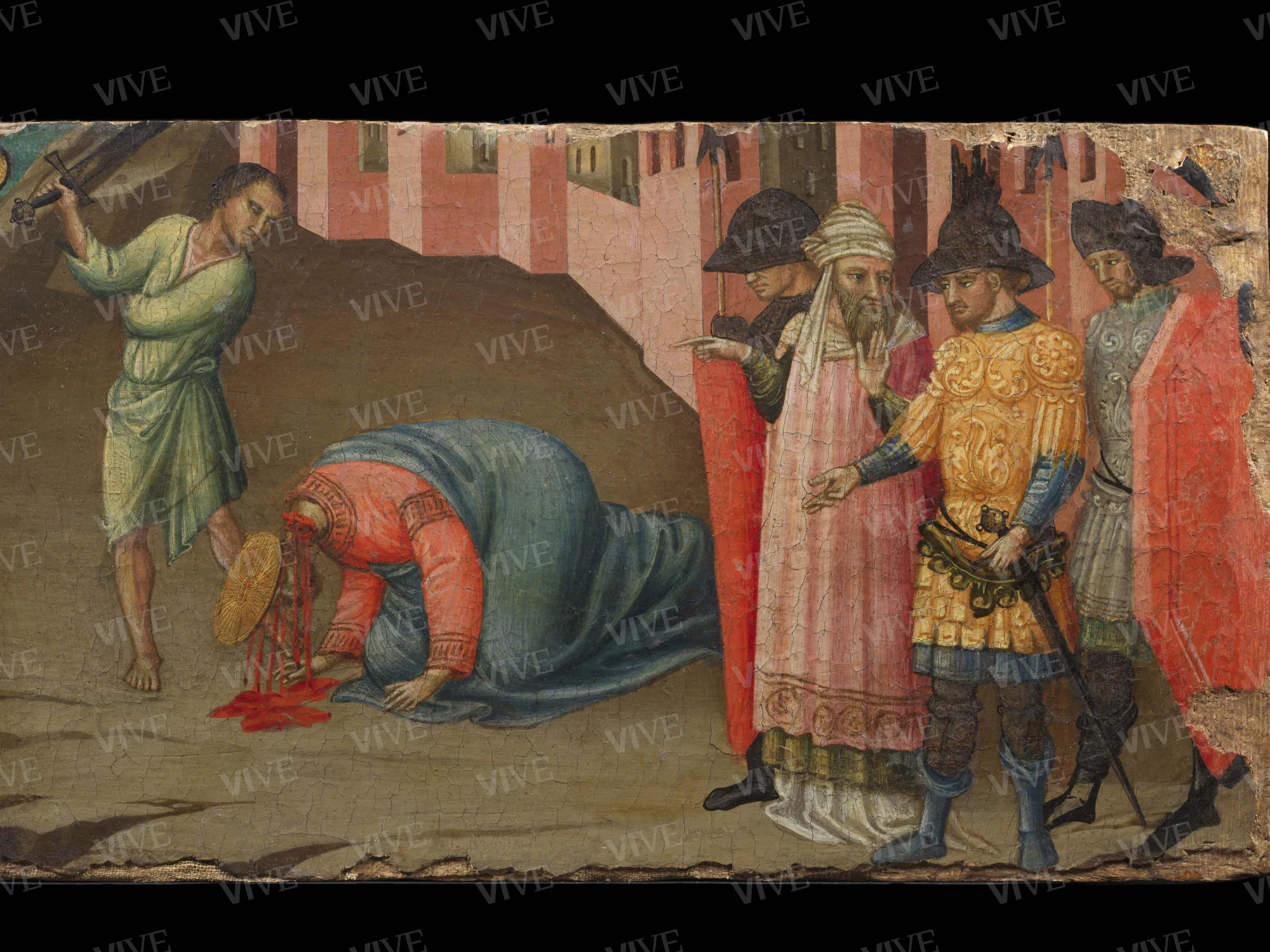Martyrdom of Saint Catherine of Alexandria and Beheading of a Saint
Bicci di Lorenzo 1430-1435
The painting is evidently part of a predella that likely included additional scenes of the martyrdom of saints, interspersed with gilded columns inspired by ancient motifs. The artist has been identified as Bicci di Lorenzo, a prominent figure from one of the most significant and enduring Florentine workshops spanning the fourteenth and fifteenth centuries, which had been passed down from father to son. Bicci’s late Gothic style is characterized by his use of varied and intense colors in drapery, meticulous attention to decorative details in armor and headgear, and the expressive gestures of the characters, which contribute to the rhythm of the narrative.
The painting is evidently part of a predella that likely included additional scenes of the martyrdom of saints, interspersed with gilded columns inspired by ancient motifs. The artist has been identified as Bicci di Lorenzo, a prominent figure from one of the most significant and enduring Florentine workshops spanning the fourteenth and fifteenth centuries, which had been passed down from father to son. Bicci’s late Gothic style is characterized by his use of varied and intense colors in drapery, meticulous attention to decorative details in armor and headgear, and the expressive gestures of the characters, which contribute to the rhythm of the narrative.
Details of work
Catalog entry
The elongated shape of this panel, which depicts episodes of the martyrdom of two saints, suggests that it is likely part of a predella containing other similar stories. However, there is no information regarding these other stories or the main panel to which this one would have been an accompaniment.
The left side likely depicts Saint Catherine of Alexandria, who was imprisoned without food by Maxentius and fed by a heavenly dove for twelve days before being tortured on the wheel. A 1946-1947 photograph (GFN E 26536), which also documents an old restoration, shows the dove and its rays, but it may have been lost along with a large area of paint in the left margin.
On the right side, beyond a gilded Ionic column separating the two scenes, the executioner has just struck the first blow on the neck of a bearded saint, in the presence of soldiers and a man wearing an oriental-style headdress. It is difficult to precisely indicate the martyr as this is a torture to which many saints were subjected (Kaftal 1952, p. 1091). The composition of this piece seems to broadly resemble Gherardo Starnina’s predella depicting the Martyrdom of Saint Barbara now in the National Gallery in London, which was part of a polyptych whose main panels are preserved in Würzburg. Since the panel appears to have been cut off along the upper margin, one wonders if, as in Starnina’s predella (Zappasodi 2017), it was not framed at the top by a series of arches, one of which rests on a gilded column.
The painting was added to the Museo di Palazzo Venezia collection from the Armenise collection in 1940. It was attributed to Bicci di Lorenzo by Roberto Longhi (Santangelo 1947, p. 37) and confirmed by Federico Zeri (Zeri 1955, p. 5, no. 18). Bicci di Lorenzo was part of a long-standing workshop: he trained under and inherited the atelier of his father Lorenzo di Bicci, which was later continued by his son Neri di Bicci (Frosinini 1986, Frosinini 1987). Between 1426 and 1434, Bicci di Lorenzo collaborated with Stefano d’Antonio (Cohn 1959; Zeri 1976, pp. 32–35; Padoa Rizzo, Frosinini 1984; Frosinini 1990), though the Palazzo Venezia portion of the predella appears to be attributable directly to Bicci. The facial features and gestures of the characters, which convey narrative intent, are characteristic of the painter. Specific elements, such as the executioner with his robes around his waist, resemble figures in other works by Bicci, such as the torturer in the predella of the Cetica triptych (Berenson 1936, pp. 71–72), albeit with a more complex pose with the hips thrust slightly forward. The soldier’s armor on the right mirrors types used by Bicci, for example, in the Cortona triptych from the late 1420s (Speranza 1992, pp. 147–149) and in the polyptych of the Bibbiena Propositura from 1435 (Berenson 1936, p. 71), reflecting a Gothic style influenced by Gentile da Fabriano and Lorenzo Monaco. These similarities and the pastel tones of the predella suggest a dating to around the first half of the 1430s.
Francesca Mari
State of conservation
The painting is in fair condition; however, it exhibits several areas of color loss, particularly along the edges and the left side.
Inscriptions
The verso contains several numbers, including the inventory number as well as "129" and "165".
Coats of arms, emblems, and marks
A red wax seal is affixed to the verso of the panel.
Provenance
Rome, Collezione Giulio Sterbini;
Rome, Collezione Lupi family, post 1911;
Rome, Collezione Giulio Armenise, 1940;
Rome, Museo Nazionale di Palazzo Venezia, from 1940.
Sources and documents
Photograph GFN E 26536, 1946–1947.
References
Berenson Bernard, Pitture italiane del Rinascimento, Milano 1936;
Santangelo Antonino (a cura di), Museo di Palazzo Venezia. Catalogo. 1. Dipinti, Roma 1947, p. 37;
Kaftal George, Saints in Italian Art. Iconography of the Saints in Tuscan Painting, Firenze 1952;
Zeri Federico (a cura di), Catalogo del Gabinetto Fotografico Nazionale. 3. I dipinti del Museo di Palazzo Venezia in Roma, Roma 1955, p. 5, n. 18;
Cohn Werner, Maestri sconosciuti del Quattrocento fiorentino, in «Bollettino d’arte», 44, 1959, pp. 61-68;
Zeri Federico, Italian Paintings in the Walter Art Gallery, Baltimore 1976;
Padoa Rizzo Anna, Frosinini Cecilia, Stefano d’Antonio di Vann i(1405-483), in «Antichità viva», 4/5, 1984, pp. 5-33;
Frosinini Cecilia, Il passaggio di gestione di una bottega pittorica fiorentina del primo Rinascimento, 1, in «Antichità viva», 25, 1986, pp. 5-15;
Frosinini Cecilia, Il passaggio di gestione di una bottega pittorica fiorentina del primo Rinascimento, 2, in «Antichità viva», 26, 1987, pp. 5-14;
Frosinini Cecilia, A proposito del "San Lorenzo" di Bicci di Lorenzo alla Galleria dell’Accademia, in «Antichità viva», 29, 1990, pp. 5-7;
Speranza, in Bocci Pacini Piera, Maetzke Anna Maria (a cura di), Il Museo dell’Accademia Etrusca. Cortona, Firenze 1992, pp. 147-149;
Rossi Sergio, I pittori del Quattrocento fiorentino e le loro botteghe. Da Lorenzo Monaco a Paolo Uccello, Todi 2012, pp. 124-125;
Zappasodi Emanuele, Ristudiando Gherardo Starnina. Materiali e comparazioni per i polittici coni pilieri, in «Nuovi Studi», 23, 2017, pp. 61-87.

